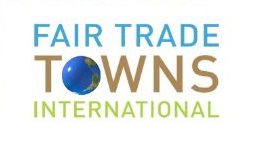Fair Trade Towns International
Almost two decades ago, in 2000, the Fair Trade Towns International movement started in the UK with the declaration of Garstang in Lancashire as the world's first Fair Trade Town. The campaign, led by the local Oxfam Group with support from the Mayor, resulted in a signed pledge ‘to buy and use Fair Trade and local produce’ by 95% of major community players including businesses, heads of schools and faith groups. The campaign gained great media coverage, which led to huge national interest and the declaration of many more Fair Trade Towns across the UK that same year. This success in the UK led communities in Ireland to quickly form a great number of Fair Trade Towns during 2003.
As the campaign took seed, a huge number of Fair Trade Towns embedded across European and Scandinavian countries from 2005–2009. Communities across the Atlantic also joined the growing movement. In the USA and Canada a total of 44 and 25 Fair Trade Towns were declared in 2006 and 2007 respectively. Australia and New Zealand joined in with a number of Fair Trade Town declarations in 2006 and 2008. Costa Rica and Ecuador joined the movement with Fair Trade Towns being declared in 2009 and 2016 respectively. To date many other countries including Cameroon, India, Lebanon and Taiwan have had communities declared as International Fair Trade Towns.
Across the world today there are over 2,000 Fair Trade Town campaigns in 30 countries. These communities across the globe form the Fair Trade Towns International network, campaigning for and promoting Fair Trade. Fair Trade Towns International shows an interactive map of Fair Trade towns across the globe here http://www.fairtradetowns.org
Back in 2000, in the UK, the Fairtrade Foundation along with grassroots campaigners developed the five core goals required for a community to qualify as a Fair Trade Town:
1. Local council passes a resolution supporting Fair Trade and agreeing to use Fair Trade products.
2. Fair Trade products are readily available in the area’s shops and are served in local cafes/catering establishments.
3. Fair Trade products are used by a number of local workplaces and community organisations (faith groups, schools, universities, etc).
4. Media coverage and events drive popular support for the Fair Trade campaign.
5. A local Fair Trade steering group is convened to ensure continued commitment to Fair Trade Town status.
These five core goals have been followed and are shared across the Fair Trade Towns International network that exists today.

